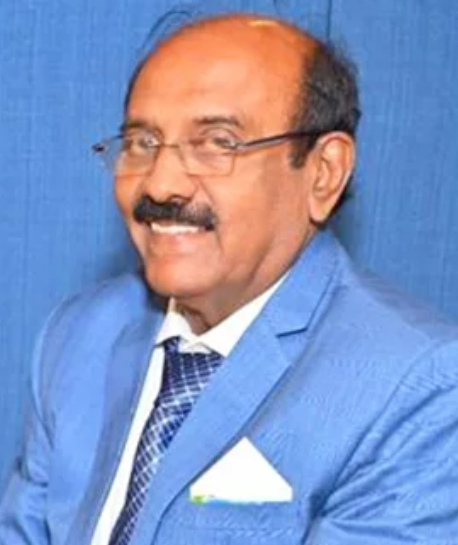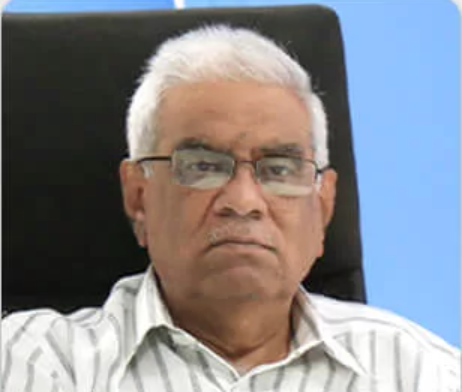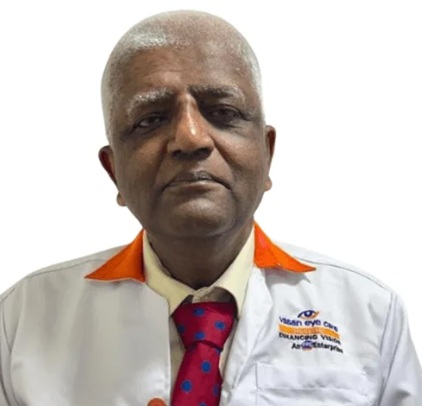Cyclophotocoagulation: Laser for Eye Relief

Treatment Duration
30 Minutes
------ To ------40 Minutes
Treatment Cost
₹ 21,000
------ To ------₹ 1,10,000

Table of Contents
- What is Cyclophotocoagulation?
- What are the Benefits of Cyclophotocoagulation?
- Who needs Cyclophotocoagulation?
- What will happen if the Cyclophotocoagulation is delayed?
- How is Cyclophotocoagulation Performed?
- What to Expect Before Cyclophotocoagulation?
- What to Expect on the Day of Cyclophotocoagulation?
- What to Expect During Cyclophotocoagulation?
- What to Expect After Cyclophotocoagulation?
- What are Risks and Complications of Cyclophotocoagulation?
You can check Cyclophotocoagulation Cost here.
What is Cyclophotocoagulation?
Glaucoma, an eye disease, damages the optic nerve responsible for carrying images to the brain. High intraocular pressure (IOP) is the main cause that can be treated by either draining out the fluid from the eye or reducing the production of fluid in the eye. Cyclophotocoagulation (CPC) is a surgery in which the laser is aimed at the ciliary processes of the eye to decrease the fluid production.
Expert Doctors (10)
NABH Accredited Hospitals (10)


What are the Benefits of Cyclophotocoagulation?
Cyclophotocoagulation has the following benefits:
- It lessens the IOP
- It lowers the production of aqueous humour by aiming at the ciliary processes.
- Quick recovery
- A-day procedure
Who needs Cyclophotocoagulation?
All types of glaucoma can be treated using CPC. However, there are other treatment options too for different types of glaucoma. Your ophthalmologist will recommend you the appropriate surgery.
What will happen if the Cyclophotocoagulation is delayed?
If the surgery is delayed, the pressure in your eye increases and can damage the optic nerve which can further lead to vision loss.
How is Cyclophotocoagulation Performed?
Your ophthalmologist will:
- Inject local anaesthesia around the eye
- Place a laser probe on the sclera in the direction of the ciliary body
- The laser aims at the ciliary body and shrinks it, which lowers the production of aqueous humour and lessens the IOP
- The procedure of cyclophotocoagulation takes around 10 minutes, and you may feel no pain during the procedure.
There are three types of CPC:
- Transscleral diode cyclophotocoagulation: A diode laser probe (810 nm) is placed on the sclera, and laser treatment as spots are applied on the sclera.
- Micropulse transscleral cyclophotocoagulation: A diode laser probe (810 nm) is placed on the sclera, and the laser energy is applied as micropulse (cut into small pulses). This type of surgery produces less inflammation and collateral damage to other eye tissues.
- Endocyclophotocoagulation: A laser probe (810 nm) is used in this treatment. This procedure requires a cut in the eye. Here, the surgeon looks at the ciliary processes with the help of a camera attached to the laser probe.
What to Expect Before Cyclophotocoagulation?
Before the surgery, your ophthalmologist will:
- Examine you and decide whether you are fit for cyclophotocoagulation
- Determine the type of treatment based on your condition
- Instruct you regarding the procedure
- Ask you to stop taking some medicines a week before the surgery—medicine like blood-thinning medications (coumadin, aspirin or medicine containing aspirin) and medication for arthritis.
- Advise you not to eat and drink for 6 hours before the surgery.
A few days before the surgery, you will meet your anesthesiologist for the following:
- Your medical history (including anaesthesia history) will be checked, and the results of the investigations advised by your doctor will be reviewed.
- For cyclophotocoagulation, local anaesthesia is preferred.
- Medical history and physical examination will be done to know if you are fit for anaesthesia.
- You will be instructed whether you can take any oral medicine
What to Expect on the Day of Cyclophotocoagulation?
On the day of the surgery, the healthcare staff will take you to the pre-operative room, where you can expect the following:
- Consent formalities
- The healthcare staff will note the following information:
- The time of your last meal and fluids.
- Medical history, current symptoms and allergies.
- Vital signs like body temperature, blood pressure and heart rate.
- The healthcare staff will trim the hair on the surgical site if needed.
- They will place a soft, thin tube called an intravenous line into a vein in your hand or arm to give medicines directly into your blood vessel.
What to Expect During Cyclophotocoagulation?
Position during surgery:
For cyclophotocoagulation, you will be kept in a supine position (lying horizontally facing up).
Cleaning and draping:
Draping and regular cleaning of the face will be done.
Anaesthesia:
The surgeon will inject local anaesthesia so that you do not feel any pain and you will be awake during the surgery.
Monitoring:
- The nurse will check your safe positioning while placing and moving you on the operating room table.
- The anesthesiologist will monitor your oxygen, blood pressure, heart function, and ventilation.
- Your eye surgeon/ophthalmologist will monitor the eye’s intraocular pressure and changes in operating condition during the progression of the surgery.
What to Expect After Cyclophotocoagulation?
After the surgery, you will be moved from the operating room to the recovery room (also called the post-operative room), where:
- You will receive painkillers and antibiotics for post-surgical pain and prevent any infection.
- The healthcare staff will closely monitor your condition for a few hours.
After completely recovering from anaesthesia:
- You will be moved from the recovery room to your room or the intensive care unit as needed.
- If you have had outpatient surgery, you will be sent home on the same day after you are stable on monitoring.
The recovery process in the hospital:
Your doctor will:
- Put a patch or a clear plastic shield over the operated area.
- Prescribe antibiotic eye drops and steroids and instruct you on how long you can take the eye drops.
- Tell you to inform your family member or friend to drive you home as you will be given sedative medication.
The recovery process after the hospital discharge:
- You will be told to wear the plastic shield for one or more weeks while sleeping to keep your eye protected.
- You will be instructed to wear sunglasses when you are going outside to protect your eyes from wind and sun.
- Avoid strenuous activities such as running, lifting, bending, and swimming for a few weeks after the surgery.
- Do not rub your eye.
- Avoid wearing eye makeup for a few weeks.
- You can get back to work within a few days to a few weeks. This depends on your job and your other eye; however, limit physical activities at work.
First follow up appointment
Your first follow up will be the next day after your surgery and a few weeks after that. Your further follow up depends on the eye healing situation.[
What are Risks and Complications of Cyclophotocoagulation?
Possible side effects that can normally occur after the surgery are:
- Eye inflammation
- Macula oedema (swelling of the retina)
- Bleeding
Risk/complications of the surgery:
- Vision loss
- Failure to lower eye pressure
- Sensitivity to light
- Hypotony (very low eye pressure)
- Sympathetic ophthalmia (the untreated eye becomes inflamed as it starts to sympathize with the treated eye)
- There are chances of infection in the case of endocyclophotocoagulation as the laser probe is inserted into the eye.
Last Updated on: 13 October 2025
Author
HexaHealth Care Team
HexaHealth Care Team brings you medical content covering many important conditions, procedures falling under different medical specialities. The content published is thoroughly reviewed by our panel of qualified doctors for its accuracy and relevance.






















